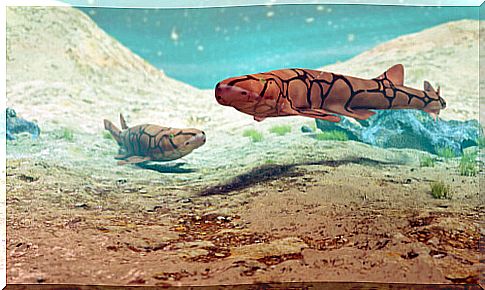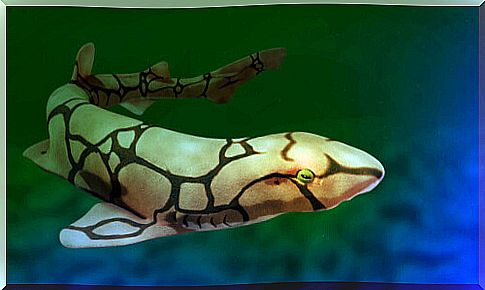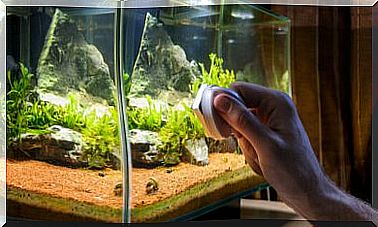The Secret Of The Sharks That Glow In The Dark

Bioluminescence is a phenomenon that often occurs in marine species, and is used by many animals as a defensive strategy. Relatively recent findings have found that deep sea sharks are capable of emitting bright green light through their skin. This quality does not seem to be very useful when it comes to going unnoticed, however, it offers many advantages. Next, we tell you the curiosities of these mysterious sharks that glow in the dark.
Sharks emitting green light
There are many animals capable of producing light. Some do it thanks to green fluorescent proteins called GFP, described in jellyfish and crustaceans, or indirectly through a symbiosis with bacteria that are the ones that produce this bioluminescence, as in the case of the squid Euprymna scolopes.
In 2019, a group of researchers discovered sharks that could communicate with each other thanks to the phenomenon of fluorescence. They were the species Cephaloscyllium ventriosum (cat shark) and Scyliorhinus retifer ( the mallero alitan shark ) belonging to the same family, whose skin has a double tonality: light and dark.
In these beings there is an established metabolic route of bromo-tryptophan-kinurenine molecules, not previously described, which are the cause of the emission of light on their skin.

The cat shark
In addition to the light and dark tones that appear on their skin, in this species fluorescent green spots stand out around the body.
The mallero alitan shark
Unlike the cat shark, this species is not characterized by fluorescent dots. In this case, the skin shows a pattern of chained black lines in which dark and light areas are seen.
Advantages of bioluminescence
In the study revealed by the journal iScience , fluorescence microscopy was used to examine tissue samples from the skin of these sharks. From the results, it was obtained that the fluorescence was distributed only in the fair skin, and it did so in a different way in the bodies of one species or another.
Another of the most interesting findings was to find that these sharks are specialized in seeing bioluminescence, since they have a visual mechanism that allows them to detect it. This is an advantage, since they cannot be visible in front of other fish, but they can communicate with each other.
In this way, bioluminescence allows individuals of the same species to communicate with each other, as well as helping them escape the eyes of other potentially harmful creatures.
Metabolites have antibacterial properties
The cat shark is known to live by circulating across the seafloor (it is benthic) and moving sinuously among the sediments of the deep. Marine bacteria such as Staphylococcus aureus and Vibrio parahaemolyticus reside on these bottoms . This led the same researchers to put the metabolites, which produce bioluminescence, to the test to see what activity they generated against bacteria.
As a result, they found that these small molecules protect animals from microbial attack. This makes sense, as these glow-in-the-dark sharks are in constant contact with the seabed.
Another property of metabolites
In recent years, studies focused on bioluminescence have been a great step for scientific advancement. But, despite the large number of publications explaining how and why it occurs, we are really far from understanding how it works.
In addition to the data obtained in the research previously described, another interesting discovery was observed. It is a parallel between the biosynthetic pathway of the bromo-kinurenine metabolites and the tryptophan-kinurenine pathway that occurs in vertebrates.
The latter regulates various biological processes in humans. For example, the accumulation of kinurenine in the brain that is related to mental disorders such as depression and schizophrenia. Therefore, these metabolites could play an important role in the central nervous system.

A world of light
After these findings, we can summarize that the bioluminescence generated in these sharks has unique properties that are very different from those that occur in other beings.
In this case, they have metabolites destined to emit a bright green color through the light areas of the skin. Thanks to this quality, these species are invisible to other marine creatures while they can be detected among them.
Likewise, it is these same molecules that offer them resistance against bacterial infections. After everything we’ve learned about these glow-in-the-dark sharks, we can only say that nature will never cease to amaze us.









